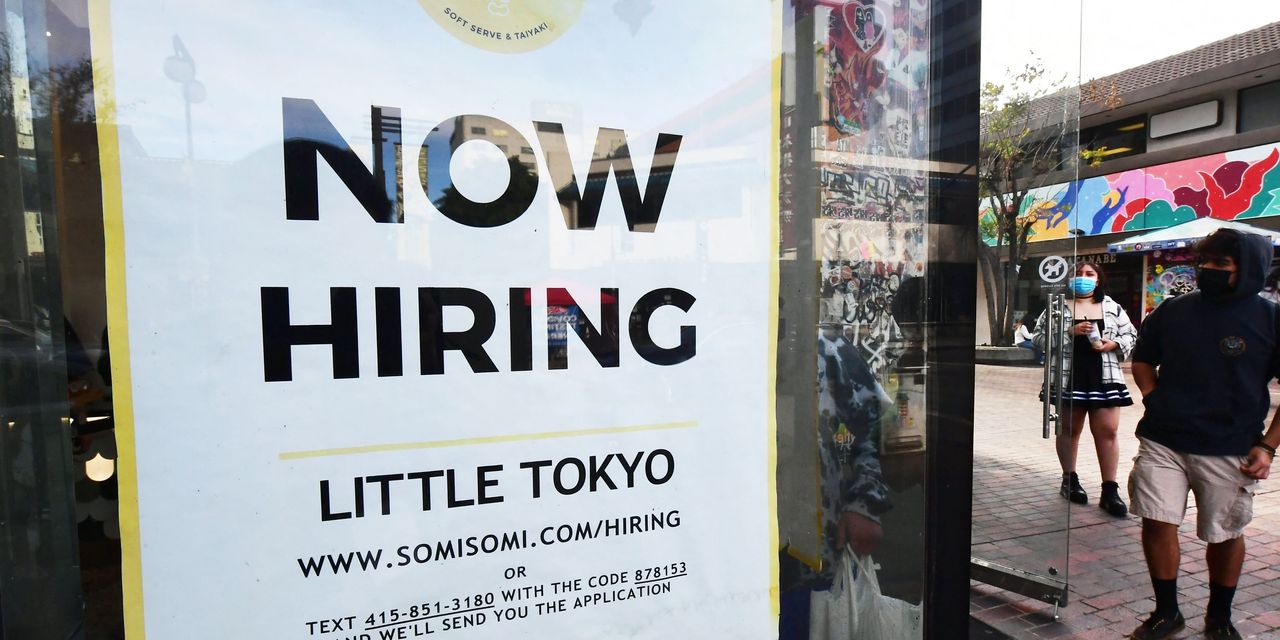
Initial filings for unemployment benefits fell for the second week in a row at the end of January, a sign the labor market is bouncing back from the temporary disruption caused by the Omicron variant of Covid-19.
The number of first-time claims decreased to a seasonally adjusted 238,000 in the week ended Jan. 29 from 261,000 the prior week, the Labor Department said Thursday. Claims had risen to 290,000 in the week ended Jan. 15 as the latest Omicron wave caused case counts to spike and millions of people called in sick.
The decline in initial claims could be a reassuring signal in advance of January’s employment report, which is expected to show job gains slowed or fell last month because of Omicron-related upheavals.
Economists say monthly employment figures could follow the same pattern as the weekly jobless claims figures: briefly rattled before rebounding.
Thursday’s jobless claims number “tells us that the hit to the labor market from the Omicron variant is short-lived,” said Gus Faucher, chief economist at the PNC Financial Services Group. “Even if we do see job losses in January we should expect to see job gains return in February.”
Economists surveyed by The Wall Street Journal expect employers added 150,000 jobs in January, though several also expect that payrolls fell last month. That would represent a sharp drop from the 537,000 monthly average job growth last year.
The Labor Department conducts its monthly jobs survey right around the 12th of every month. In January, that coincided roughly with the peak of a surge in Covid-19 cases, which could make Friday’s jobs report look particularly grim, Mr. Faucher said.
“It’s likely the timing with the variant kind of overstates the impact on the labor market,” he said.
Broadly speaking the labor market remains healthy enough to recover from the latest virus-related setback, economists say.
“I would expect the bounceback to be very quick,” said Michael Pearce, senior economist at Capital Economics. “Most of that is going to be reversed in February and March.”
Jobless claims reached pre-pandemic lows in November after surging to more than 6 million at the onset of the pandemic in early 2020. Claims then hit a record low in early December as businesses held on to more workers in the face of a persistent labor shortage.
Other economic indicators point to a healthy labor market in which jobs are plentiful and employers are struggling to lure workers, Mr. Pearce said.
There were 10.9 million job openings in December up from 10.8 million November, according to Labor Department data released earlier this week. Layoffs and discharges fell to a record low of 1.2 million and there were 4.3 million quits in December, the report showed.
“It’s still workers quitting in record numbers and firms holding on to everyone else they’ve got,” Mr. Pearce said. That is consistent with low numbers of initial jobless claims, he said.
A separate Labor Department report showed that the tight labor market has been pushing up employee wages.
Wage and benefits costs were up 4% in the fourth quarter of 2021 compared with the same period the previous year, the report said.
The four-week moving average of new jobless claims rose slightly last week to 255,000, the Labor Department said in Thursday’s report. Overall, roughly 1.62 million people were collecting unemployment benefits in the week ended Jan. 22, down 44,000 from the prior week, the department said.
On Jan. 26, Federal Reserve Chairman Jerome Powell said the labor market had fully recovered from the pandemic and was now firing on all cylinders. That should prompt Fed officials to move to raise interest rates soon, perhaps as early as March, he said.
Write to David Harrison at [email protected]
Copyright ©2022 Dow Jones & Company, Inc. All Rights Reserved. 87990cbe856818d5eddac44c7b1cdeb8








